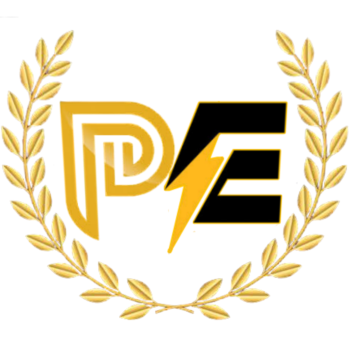What is an Induction Motor?
An induction motor (also known as an asynchronous motor) is a commonly used AC electric motor. In an induction motor, the electric current in the rotor needed to produce torque is obtained via electromagnetic induction from the rotating magnetic field of the stator winding. The rotor of an induction motor can be a squirrel cage rotor or wound type rotor.
Induction motors are referred to as ‘asynchronous motors’ because they operate at a speed less than their synchronous speed. So first thing to understand – what is synchronous speed?

Synchronous Speed
Synchronous speed is the speed of rotation of the magnetic field in a rotary machine, and it depends upon the frequency and number poles of the machine. The induction motor always runs at speed less than its synchronous speed. The rotating magnetic field produced in the stator will create flux in the rotor, hence causing the rotor to rotate. Due to the lag between the flux current in the rotor and the flux current in the stator, the rotor will never reach its rotating magnetic field speed (i.e. the synchronous speed).
There are basically two types of induction motor. The types of induction motor depend upon the input supply. There are single phase induction motors and three phase induction motors. Single phase induction motors arenot a self-starting motor, and three phase induction motor are a self-starting motor.
Working Principle of Induction Motor
We need to give double excitation to make a DC motor to rotate. In the DC motor, we give one supply to the stator and another to the rotor through brush arrangement. But in induction motor, we give only one supply, so it is interesting to know how an induction motor works. It is simple, from the name itself we can understand that here, the induction process is involved. When we give the supply to the stator winding, a magnetic flux gets produced in the stator due to the flow of current in the coil. The rotor winding is so arranged that each coil becomes short-circuited.
The flux from the stator cuts the short-circuited coil in the rotor. As the rotor coils are short-circuited, according to Faraday’s law of electromagnetic induction, the current will start flowing through the coil of the rotor. When the current through the rotor coils flows, another flux gets generated in the rotor. Now there are two fluxes, one is stator flux, and another is rotor flux. The rotor flux will be lagging in respect of the stator flux. Because of that, the rotor will feel a torque which will make the rotor to rotate in the direction of the rotating magnetic field. This is the working principle of both single and three phase induction motors.
Types of Induction Motors
The types of induction motors can be classified depending on whether they are a single phase or three phase induction motor.
Single Phase Induction Motor
The types of single phase induction motors include:
- Split Phase Induction Motor
- Capacitor Start Induction Motor
- Capacitor Start and Capacitor Run Induction Motor
- Shaded Pole Induction Motor
Three Phase Induction Motor
The types of three phase induction motors include:
- Squirrel Cage Induction Motor
- Slip Ring Induction Motor
We have already mentioned above that the single-phase induction motor is not a self-starting motor, and that the three-phase induction motor is self-starting. So what is a self-starting motor?
When the motor starts running automatically without any external force applied to the machine, then the motor is referred to as ‘self-starting’. For example, we see that when we put on the switch the fan starts to rotate automatically, so it is a self-starting machine. Point to be noted that fan used in home appliances is a single phase induction motor which is inherently not self-starting. How? Does a question arise as to how it works? We will discuss it now.
Why is Three Phase Induction Motor Self Starting?
In a three phase system, there are three single phase lines with a 120° phase difference. So the rotating magnetic field has the same phase difference which will make the rotor to move. If we consider three phases a, b, and c when phase a gets magnetized, the rotor will move towards the phase a winding a, in the next moment phase b will get magnetized and it will attract the rotor and then phase c. So the rotor will continue to rotate.


You must be logged in to post a comment.